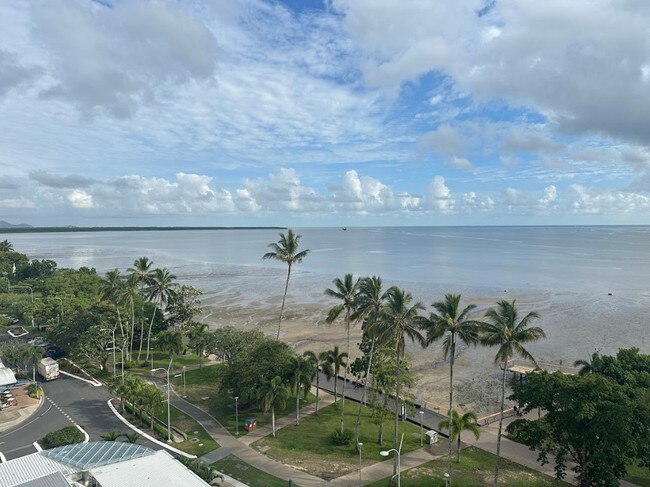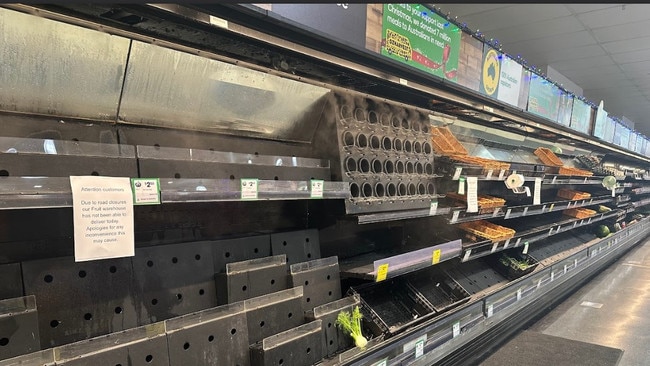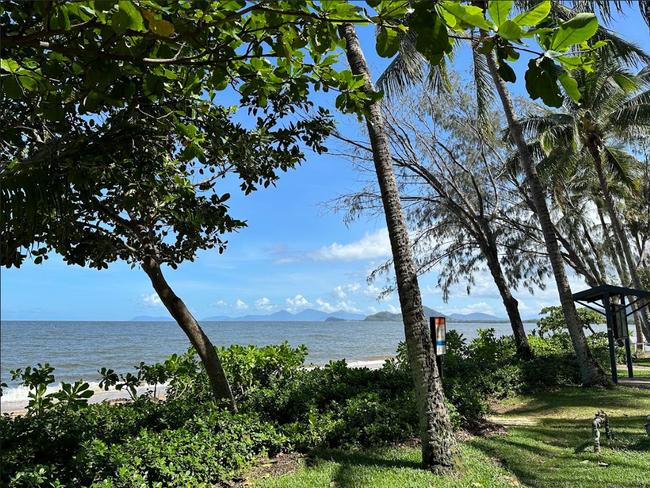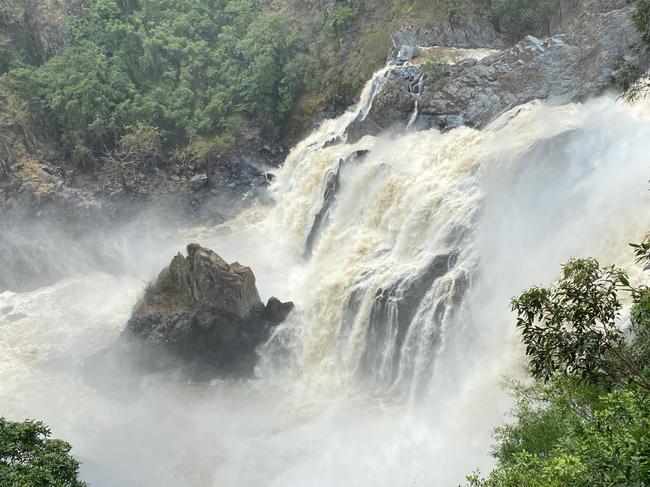I holidayed in Cairns during the flood disaster, here’s what tourists need to know
From images of floating planes, inundated homes and dramatic rescues, you’d be forgiven for thinking the entire FNQ is a disaster zone. That’s simply not true. Here’s the real situation if you’re planning a holiday there.
Lifestyle
Don't miss out on the headlines from Lifestyle. Followed categories will be added to My News.
I’ve just spent the past five days in Cairns as the region is gripped by a record flooding disaster … and it’s been totally fine.
From images of floating planes at the airport to inundated streets and dramatic rescues, those down south could be forgiven for thinking the entire region is a disaster zone and still underwater.
Jasper’s Fury: Far North Queensland reels from widespread flooding
The reality is, that’s simply not true.
Most key tourism drawcards are back open, the roads are dry, skies are blue and you can have a great holiday.
Tourism is the lifeblood of the far north and while the flooding has devastated some communities, the rest of the region is open for business and desperate for tourists to return for the traditionally busy Christmas holidays.
This is what tourists who plan to visit FNQ in the next few weeks need to know:
We flew into Cairns Airport on Sunday as torrential rain pounded down. It was five days since Cyclone Jasper had crossed the coast with a remaining rain cell lingering.
My husband and I had debated if we should cancel but decided to plough on with a ‘she’ll be right’ attitude, expecting the rain would soon pass and with the knowledge FNQ locals are experts at bouncing back quickly.
As we flew in over Holloways Beach just near Cairns airport, we saw streets awash, cars up to their bonnets in floodwaters and houses inundated.
At that moment, we looked at each other and went ‘oh sh*t, we may have underestimated this’.
Within hours the airport was closed and images of small planes floating near the runway started circulating.
The highways to the north, south and west were flooded. We were stuck.

Shortly after checking into our hotel, a voice came over the loud speaker, ‘clean drinking water supplies are at critical levels and expected to run out within 30 hours, please fill up your baths and basins by 9pm’.
We immediately complied and also made a dash to Woolworths for a 24-pack of water bottles.
The BOM radar showed the rain cell had stalled over Cairns. It hadn’t budged for hours and continued to dump bucketloads of rain.
By the end of the emergency, more than 2m of rain would be recorded in some areas.
I had a minor panic. I’m 30 weeks pregnant and now stuck in the disaster zone with no way out. I thought, ‘what happens if I go into premature labour?’.
I woke up throughout the night looking out the window to see if it was still raining and checking the BOM radar.
By morning, the rain had stopped in Cairns but the cell continued to hang over Port Douglas and the indigenous community of Wujal Wujal about 120km to the north.
But the streets of Cairns were completely dry and free of any debris you’d expect post-cyclone, cafes were open and the boardwalk was bustling with people walking their dogs after days cooped up inside.

Cairns CBD was teaming with stranded tourists unable to fly out due to the airport closure or head north to the resort towns of Palm Cove and Port Douglas.
With the major highways closed, we settled into a day of going for bike rides, having afternoon drinks (or mocktails in my case) at the thriving waterside bars, dining at the amazing restaurants and lazing by the hotel pool.
By Tuesday, the airport was taking flights again, the reef tours had restarted, the blue skies had returned and the sun was shining.
But still, TV coverage of small communities ravaged by the floods endured. It was easy for those down south to assume the entire region was a disaster zone.
The texts from concerned family kept flooding in. ‘Are you OK, are you flooded in, are you underwater, are you dead?, they’d ask.
I’d send them back a photo of a frozen mocktail with the blue sky and dry streets in the background saying ‘we’re totally sweet’.
By Wednesday, the Captain Cook Highway to Palm Cove had reopened. We drove along it to see large tree debris littered along the side and sadly, a couple of dead cows who had been washed away in the raging Barron River now wedged under a culvert.
But the road infrastructure was largely undamaged and traffic was flowing.

We headed for the Skyrail and were among the first tourists to return to the rainforest village of Kuranda.
The streets were still littered with some leaf debris but all the traders were open.
“Helloooo! People!,” said one shop owner emphatically as we wandered past.
It was clear they’d been lonely the past few days and had missed the tourists - the lifeblood of their little economy.
We hopped off the SkyRail gondola at Barron Falls to see it thundering in all its glory - mist spraying everywhere and its power awe-inspiring. It was amazingly similar to Niagara Falls and truly a sight to behold.
Only a week earlier it was a trickle. How lucky were we.

With the Captain Cook Highway now open to Palm Cove, we spent the afternoon in the resort town which was back thriving, the only hint of the rain bomb a few days earlier was the scarping on the beach and the end car park which had a few metres shaved off it by the powerful swells.
So for those of you with plans to travel to FNQ - keep them.
The region is open for business, the reef tours are back firing, Kuranda and the SkyRail are open, Palm Cove is accessible, the sun is out, some of the national parks have reopened and the Cairns CBD offers great food, drink and plenty to do.
The Kuranda Railway will be out of action for a while longer and the road to Port Douglas remains closed but operators are ferrying guests in by boat and it shouldn’t be long til road access is restored.

Heartbreakingly, some communities have been hit hard with 1000+ houses inundated and people left without a home for Christmas. The bill to fix damaged infrastructure will number into the millions or even billions.
But any perception that the entire region is out of action is incorrect.
Be smart and avoid the few areas still impacted by flooding. But get back to the far north and support the local businesses who are so reliant on a booming Christmas.





